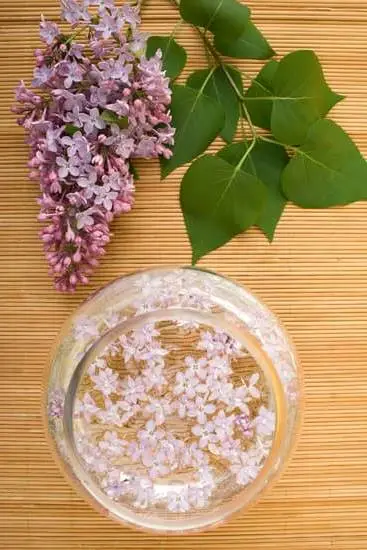Aromatherapy has been used for centuries as a natural and holistic way to promote relaxation, improve mood, and support overall well-being. One popular method of using aromatherapy is by mixing essential oils with water. In this article, we will explore the basics of aromatherapy oils, the benefits of using them in water, how to choose the right oils for mixing with water, and understanding dilution ratios for safe use.
Aromatherapy oils, also known as essential oils, are highly concentrated plant extracts that are known for their therapeutic properties. These oils are derived from various parts of plants through methods such as steam distillation or cold pressing. Each essential oil contains its own unique combination of compounds that contributes to its distinct aroma and potential health benefits.
When mixed with water, aromatherapy oils can be diffused into the air or used in sprays and baths to create a soothing and aromatic environment. The practice of using essential oils in water can provide a range of benefits for physical, emotional, and mental well-being. However, it is important to understand how to safely mix these oils with water in order to maximize their effectiveness while avoiding any potential risks.
Benefits of Using Aromatherapy Oils in Water
Aromatherapy oils have been used for centuries for their therapeutic and healing properties. When mixed with water, they can offer a variety of benefits for both physical and mental well-being. Whether used in a diffuser, spray, or bath, aromatherapy oils can enhance the environment and promote relaxation, stress relief, and overall wellness.
There are several benefits to using aromatherapy oils in water. Firstly, when added to a diffuser or spray, they can help purify the air and create a pleasant aroma that promotes calmness and relaxation. Additionally, when used in a bath, aromatherapy oils can help alleviate muscle tension, reduce stress, and improve skin health. The inhalation and absorption of the essential oils through steam or mist can also have positive effects on mental health by promoting emotional balance and reducing anxiety.
When choosing aromatherapy oils to mix with water, it’s important to consider their individual properties and intended use. For example, lavender oil is known for its calming effects and is often used for promoting sleep and relaxation, while eucalyptus oil is commonly used for respiratory support and clearing congestion. It’s essential to select oils that align with your desired outcome when creating blends for water-based methods such as diffusion or baths.
To ensure the safe and effective use of aromatherapy oils in water, understanding dilution ratios is crucial. Diluting essential oils properly not only ensures that they are safe for topical application or inhalation but also helps disperse them evenly in water-based solutions.
The general rule of thumb is to use a maximum of 2% dilution rate for adults (approximately 12 drops of essential oil per fl oz/30 ml of carrier oil or water). Understanding proper dilution ratios is key to reaping the full benefits of aromatherapy without causing adverse reactions.
In summary, – Aromatherapy oils provide numerous benefits when mixed with water.
- The right selection of aromatherapy oils contributes to achieving specific therapeutic goals
- Proper understanding of dilution ratios is vital for safely mixing essential oils with water
By following these guidelines on how to mix aromatherapy oils with water, individuals can effectively harness the power of essential oils for promoting holistic well-being while ensuring safety in their usage. Whether incorporated into daily self-care routines or utilized in professional settings such as spas or wellness centers; blending essential oil-water combinations skillfully enhances one’s overall experience through sensory pleasures aligned with specific intentions characterized by balance.
Choosing the Right Aromatherapy Oils for Mixing With Water
When it comes to choosing the right aromatherapy oils for mixing with water, it’s important to consider the specific benefits and properties of each oil. Different essential oils have different therapeutic properties, so selecting the right ones will depend on the desired effect or outcome. Here are some popular essential oils that are commonly used for mixing with water in aromatherapy:
- Lavender: Known for its calming and relaxing properties, lavender essential oil is often used in water-based aromatherapy blends to promote sleep and reduce stress and anxiety.
- Peppermint: With its invigorating and refreshing scent, peppermint essential oil is great for adding a burst of energy and mental clarity to water-based blends. It can also help alleviate headaches and nausea.
- Lemon: Lemon essential oil is popular for its uplifting and cleansing properties. When mixed with water, it can help purify the air, boost mood, and enhance mental focus.
It’s important to note that some essential oils may not be suitable for use in water-based aromatherapy blends due to their chemical composition or potential skin sensitivity. Therefore, it’s crucial to research each oil thoroughly before incorporating them into your mixtures.
When deciding on which essential oils to use, also take into account personal preferences regarding aroma. Some people might enjoy floral scents like rose or jasmine, while others might prefer citrusy or herbal aromas like bergamot or eucalyptus.
Overall, choosing the right aromatherapy oils for mixing with water requires a good understanding of their individual properties and potential benefits.
Lastly, keep in mind that when diluting essential oils in water, always start with small amounts to ensure that you achieve the desired potency without overwhelming the senses or causing any adverse reactions.
Understanding Dilution Ratios
Aromatherapy oils are a popular way to promote relaxation and improve overall well-being. When using aromatherapy oils with water, it is essential to understand the proper dilution ratios to ensure safety and effectiveness. This section will provide guidance on how to mix aromatherapy oils with water safely, allowing you to enjoy the benefits of these oils without any adverse effects.
To start, it’s important to understand that essential oils are highly concentrated and should never be used directly on the skin or ingested. When mixing aromatherapy oils with water, always use a carrier solution such as water or a neutral oil.
The general rule of thumb for diluting essential oils in water is to use 3-5 drops of essential oil per 100ml of water. However, the specific dilution ratio may vary depending on the type of essential oil being used and its intended purpose.
When mixing aromatherapy oils with water for topical application, such as in a spray or bath, it’s crucial to pay attention to the recommended dilution ratios for each specific oil. Some essential oils may require a lower concentration for safe use, especially when applying directly to the skin. Additionally, certain individuals may have sensitivities or allergies to specific essential oils, so it’s important to perform a patch test before using any new blend.
In summary, understanding how to mix aromatherapy oils with water safely involves paying attention to dilution ratios and taking precautions when using these blends. By following the recommended guidelines and using high-quality essential oils, you can create customized blends that provide therapeutic benefits without any risk of harm.
| Understanding Dilution Ratios | How to Mix Aromatherapy Oils With Water Safely |
|---|---|
| Properly dilute essential oils in water | Use carrier solutions like water or neutral oil |
| Pay attention to recommended dilution ratios for each oil | Perform patch tests before using new blends |
Methods for Mixing Aromatherapy Oils With Water
Aromatherapy oils can be mixed with water in various ways to enjoy their therapeutic benefits. One common method is through the use of diffusers, which disperse the oil into the air as a fine mist for inhalation. Another way is by creating homemade sprays for a quick and easy way to freshen up a room or fabric. Lastly, adding aromatherapy oils to baths can provide both aromatic and skin benefits.
When using a diffuser, it’s important to follow the manufacturer’s instructions for adding water and aromatherapy oils. Typically, a few drops of essential oil are added to the water in the diffuser’s reservoir, and then it is diffused into the air using ultrasonic or heat technology. This method allows you to enjoy the aroma and potential therapeutic effects of the oils throughout a room.
For creating sprays, distilled water should be used in combination with essential oils. A general ratio is about 2 ounces of water to 15-20 drops of essential oil, but this can be adjusted based on personal preference. The mixture can then be poured into a spray bottle and used as an air freshener or linen spray.
When adding aromatherapy oils to baths, it’s best to mix them with a carrier oil or an emulsifier before pouring them into the bathwater. This helps prevent any potential skin irritation that may occur if undiluted essential oils come into direct contact with the skin. Once blended with a carrier oil or emulsifier, simply add the mixture into running bathwater and enjoy both the aromatic experience and potential skincare benefits.
| Aromatherapy Method | Instructions |
|---|---|
| Diffusers | Follow manufacturer’s instructions for adding water and aromatherapy oils. |
| Sprays | Mix about 2 ounces of distilled water with 15-20 drops of essential oil in a spray bottle. |
| Baths | Mix aromatherapy oils with a carrier oil or emulsifier before adding them to running bathwater. |
Tips for Enhancing Aromatherapy Oil-Water Blends
Choosing the Right Carrier Oils
When mixing aromatherapy oils with water, it’s important to consider adding carrier oils to enhance the blend. Carrier oils not only help dilute the essential oils, but they also provide moisturizing and nourishing benefits for the skin.
Some popular carrier oils to consider include coconut oil, sweet almond oil, jojoba oil, and olive oil. Each carrier oil has its own unique properties and benefits, so it’s essential to choose one that complements the aroma and therapeutic effects of the essential oils being used.
Utilizing Emulsifiers
In some cases, simply mixing aromatherapy oils with water may not produce a well-blended solution. This is where emulsifiers come in handy. Emulsifiers help bind the essential oils and water together, creating a more stable and uniform mixture. Common emulsifiers include witch hazel, vegetable glycerin, and alcohol. When using emulsifiers, it’s important to follow recommended dilution ratios to ensure the safety and effectiveness of the aromatherapy oil-water blend.
Blending Techniques
To successfully incorporate carrier oils and emulsifiers into your aromatherapy oil-water blends, it’s important to utilize proper blending techniques. One effective method is to mix a small amount of carrier oil or emulsifier with the essential oils first before adding it to the water. This helps prevent clumping or separation of the oils in the water.
Additionally, some emulsifiers may require gentle heating or thorough stirring for complete incorporation into the blend. Experimenting with different blending techniques will help you find the best method for achieving well-mixed aromatherapy oil-water blends with added carrier oils and emulsifiers.
Precautions and Safety Measures for Using Aromatherapy Oils in Water
Understanding the Risks
Before using aromatherapy oils in water, it is important to understand the potential risks and safety measures associated with this practice. Aromatherapy oils are highly concentrated and can cause skin irritation, allergic reactions, and even toxicity if not used properly. It is crucial to educate yourself on the specific safety concerns related to each essential oil you plan to use in your water blends.
Proper Dilution Methods
One of the most important safety measures when mixing aromatherapy oils with water is to ensure proper dilution. Different essential oils have different dilution ratios depending on their potency and intended use. Always follow recommended guidelines for diluting essential oils in water to avoid skin irritation or other adverse effects.
Quality of Water
The quality of water used for mixing aromatherapy oils is also a critical factor to consider. Using distilled or purified water is recommended to prevent any contaminants or impurities from affecting the purity and effectiveness of the essential oils. Tap water may contain chlorine, minerals, or other substances that could interfere with the therapeutic benefits of the aromatherapy oils.
By taking these precautions and safety measures into consideration, you can safely enjoy the benefits of using aromatherapy oils in water for various wellness purposes without risk of adverse effects. Always prioritize your health and wellbeing by educating yourself on how to mix aromatherapy oils with water effectively and safely.
Conclusion and Recommended Aromatherapy Oil-Water Blends for Different Purposes
In conclusion, incorporating aromatherapy oils into water can be a simple yet effective way to enjoy the benefits of these natural remedies. Whether you are looking for relaxation, improved mood, or relief from certain ailments, mixing aromatherapy oils with water can provide a convenient and aromatic solution. By understanding the basics of aromatherapy oils and the benefits of using them in water, individuals can enhance their overall well-being in an all-natural way.
When choosing the right aromatherapy oils for mixing with water, it is important to consider individual preferences and desired effects. Whether using a diffuser, spray, or bath method for mixing aromatherapy oils with water, understanding dilution ratios and safety measures is crucial for ensuring a pleasant and safe experience. Additionally, incorporating carrier oils and emulsifiers into aromatherapy oil-water blends can further enhance their efficacy and longevity.
To maximize the benefits of aromatherapy oil-water blends, it is recommended to explore different combinations based on specific purposes. For relaxation, lavender and chamomile essential oils are popular choices, while citrus essential oils like lemon and bergamot are commonly used for mood improvement.
Individuals seeking relief from congestion or muscle pain may find eucalyptus and peppermint essential oils beneficial when mixed with water. By following these guidelines and recommendations, anyone can easily create personalized aromatherapy oil-water blends to suit their individual needs.
Frequently Asked Questions
How Many Drops of Essential Oil to Mix With Water?
The number of drops of essential oil to mix with water depends on the purpose and concentration desired. For a light scent, 5-6 drops per ounce of water may suffice, but for stronger aromas, up to 15 drops or more could be used.
What Is the Ratio of Essential Oils to Water?
The ratio of essential oils to water also varies based on personal preference and the intended use. A common ratio is around 5-10 drops of essential oil per ounce of water, but this can be adjusted to achieve the desired scent strength.
How Do You Mix Fragrance Oil With Water?
To mix fragrance oil with water, you can simply add a few drops of the fragrance oil into a container of water and stir gently. Using a small amount at first allows you to adjust the strength of the scent before adding more if needed.

Are you looking for a natural way to improve your health and wellbeing?
If so, aromatherapy may be the answer for you.






